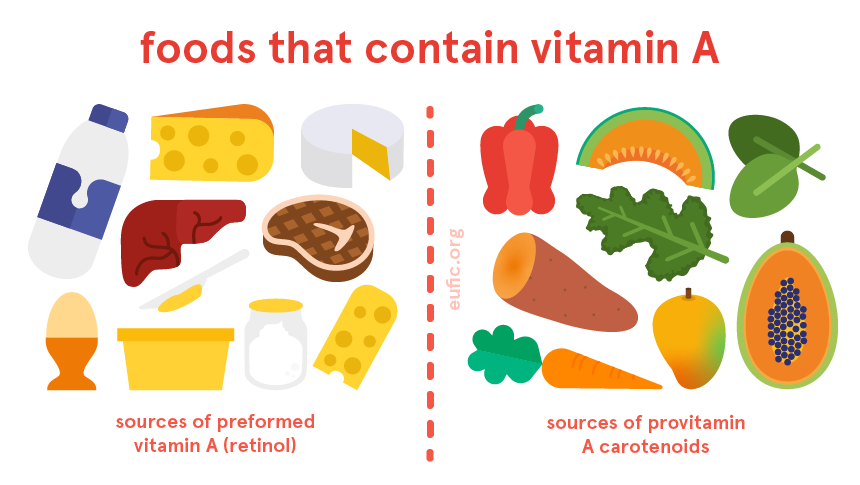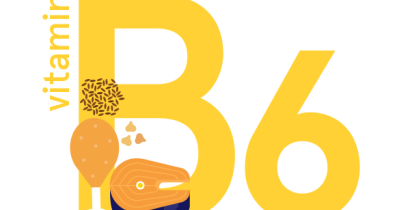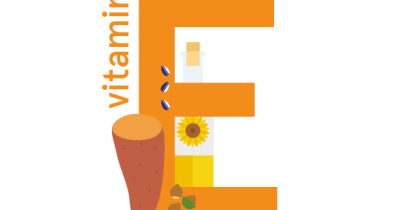Vitamin A: foods, functions, how much do you need & more
Last Updated : 11 January 2021- What is vitamin A?
- What are the functions of vitamin A?
- How much vitamin A do I need?
- What foods contain vitamin A?
- Does vitamin A interact with other nutrients?
- What happens if I have too little vitamin A?
- What happens if I have too much vitamin A?
- When should I pay extra attention to my vitamin A intake?
If you heard that carrots could help you get perfect version, know that it was about the vitamin A in them. While this vitamin cannot give you super vision, it’s an important one to keep eye health and help you adjust in dim conditions.
What is vitamin A?
Vitamin A is the generic name used for a group of fat-soluble compounds that include two main forms: carotenoids, found in plant and plant-based foods; and pre-formed vitamin A (or retinol), mainly found in animal products.
Carotenoids are pigments responsible for plant’s red, yellow and orange colours, which our bodies can absorb and convert to vitamin A. One of the most well-known and abundant carotenoids in nature is beta-carotene. There are also other types of carotenoids in foods, such as lycopene, lutein and zeaxanthin, which are not converted to vitamin A in our bodies but have other health benefits.
Our bodies absorb vitamin A from animal products better than vitamin A from plant-based foods.
What are the functions of vitamin A?
Vitamin A plays a key role in developing and supporting our vision, keeping our immune system functioning properly and helping our cells and tissues grow and develop. Vitamin A is particularly important for reproduction, as it helps the normal growth and development of the embryo.

How much vitamin A do I need?
How much vitamin A you need per day changes according to your age, sex and life-stage.
The dietary reference values (DRV) for vitamin A are measured in μg of retinol equivalents (RE), a unit that takes into account the fact that we absorb retinol better than carotenoids.
|
1 μg of RFE is equivalent to: |
1 μg of of retinol |
|
6 μg of beta-carotene |
|
|
12 μg of other carotenoids |
The DRV* set for healthy adults (over the age of 18) is 650-750 μg RE per day. During pregnancy and lactation, needs can go up to 700 μg RE and 1300 μg RE per day, respectively.
We can get enough vitamin A from our diets by eating a variety of foods. Following your country's dietary guidelines on a healthy and balanced diet will help you meet your needs for vitamin A.

* These values are based on the population reference intakes (PRI) estimates from the European Food Safety Authority (EFSA). They should not be interpreted as nutrient goals. To DRVs in Europe click here.
What foods contain vitamin A?
Vitamin A can be found in a variety of foods as retinol (mainly found in animal products) or as carotenoids (found in plants and plant-based foods).
Foods rich in retinol include:
- meat (particularly organ meats)
- butter
- margarine enriched with retinol
- dairy
- eggs.
Foods rich in carotenes include many vegetables and fruits such as:
- sweet potatoes, carrots, pumpkins, dark green leafy vegetables, sweet red peppers, mangoes and melons.

Does vitamin A interact with other nutrients?
In healthy individuals, imbalances of vitamin A do not seem to affect the levels of other nutrients.
However, in people with iron deficiency, low levels of vitamin A can further reduce their levels of iron and lead to anaemia caused by vitamin A deficiency.
What happens if I have too little vitamin A?
Vitamin A deficiency is not common in developed countries since most people can get the recommended amounts of this vitamin through the diet. However, it can happen to people with specific health conditions that impair the absorption of foods and nutrients, or in cases of malnutrition.
Vitamin A deficiency affects the normal functioning of our vision, immunity and reproduction and it can lead to anaemia if our iron levels are already low. It’s particularly harmful during pregnancy, since it increases risk of birth defects.
In more severe cases, vitamin A deficiency can lead to a disease called xerophthalmia, which affects our eye health causing night blindness, severe dryness of the eyes, spots in the white of the eyes and eventually, blindness. However, this is more common in developing countries where diets are poor in foods that contain vitamin A.
What happens if I have too much vitamin A?
It’s uncommon to have too much vitamin A from our diet, but some foods, such as liver and liver products, can easily help us reach our daily needs in small portions.
High levels of vitamin A in our bodies can cause skin disorders, nausea, vomiting, muscle problems and liver damage. It can be particularly harmful during pregnancy as it increases the risk of birth defects. Harmful doses of vitamin A can be reached through food supplements, so pay attention.
Healthy adults, including during pregnancy and lactation, are advised not to have more than 3000 μg RE per day, which is about four times the DRV for this vitamin. It’s also recommended that postmenopausal women who are at greater risk of osteoporosis, should not have more than 1500 μg RE per day, as it could increase the risk of bone fracture.
Before taking vitamin A supplements, check with your doctor or consult a registered dietitian/nutritionist to discuss if there’s any value or risks in adding a supplement to your diet.
When should I pay extra attention to my vitamin A intake?
Vitamin A deficiency is not a risk for the general population since most people can get the recommended amounts for this vitamin from a varied and balanced diet.
During pregnancy and lactation, the needs for vitamin A are higher to support the healthy development of the baby, as well as to compensate for losses through breast milk. However, high doses of vitamin A during pregnancy can also increase the risk of birth defects, so make sure to seek professional advice from your doctor or a qualified nutritionist/dietitian.
Similarly, children up to the age of 6 years old also need to ensure they have a healthy and balanced diet with enough sources of vitamin A as this vitamin is particularly important for their normal growth and development.

References
- European Food Safety Authority. 2015. Scientific opinion on Dietary Reference Values for vitamin A. EFSA Journal 2015;13(3):4028
- World Health Organization (WHO). 2004. Vitamin and mineral requirements in human nutrition. 2nd edition. Geneva, Switzerland: WHO.
- Public Health England. 2019. McCance and Widdowson’s Composition of Foods Integrated Dataset. Retrieved from:



